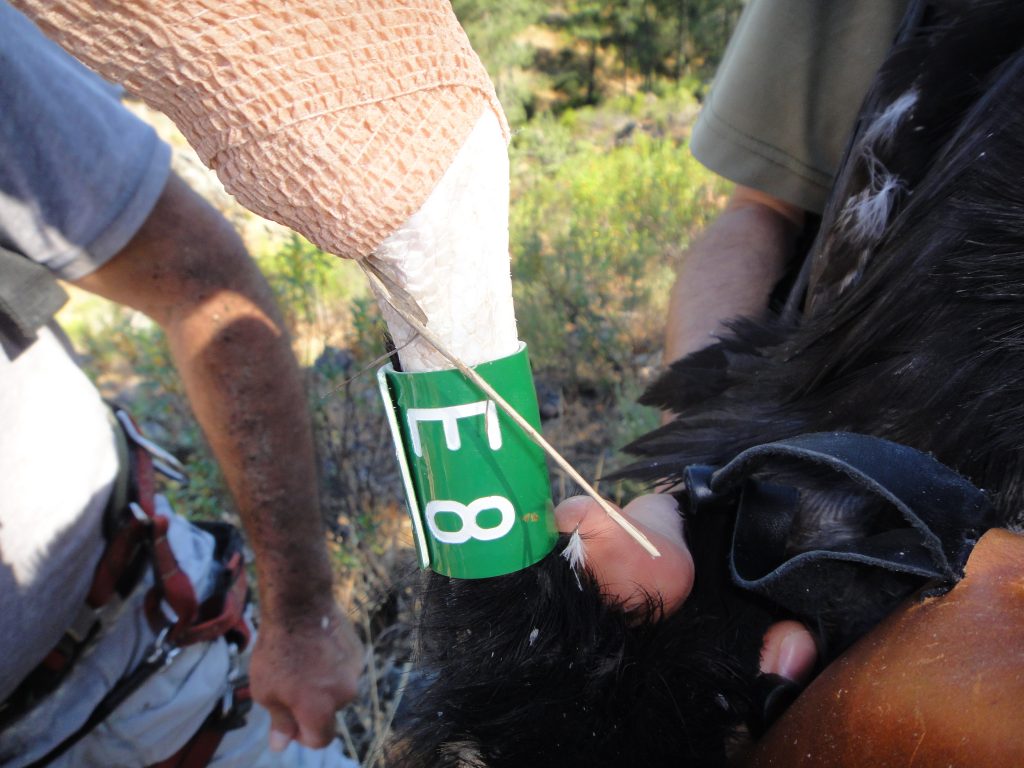
In a first for cinereous vultures’ conservation in Portugal we’ve been working with Portugal’s Liga para a Protecção da Natureza (LPN) to successfully fit a GPS transmitter to a wild young cinereous vulture in the Moura region of southern Portugal.
Murtigão
Conservationists from LPN and the Institute for Nature Conservation and Forests (ICNF) identified a young male cinereous vulture around 90 days old to be tagged. The team took measurements such as weight from the bird before attaching a ring to him and fitting him with a GPS transmitter, provided by the VCF with funding from the MAVA Foundation. The team named him Murtigão after the river valley he was born on the Herdade da Contenda Estate.

Following cinereous vultures
Weighing between 30g and 40g fitting a GPS transmitter to Murtigão helps conservationists understand his movements, foraging ranges and habits, it also allows them to pick up when a vulture is no longer moving and potentially injured. This information is vital to reveal any threats he may face during his travels giving insights for conservationists that will allow them to carry out actions to reduce the risk he faces and help support the species comeback in the area.
Cinereous vultures in Portugal
Cinereous vultures became extinct as breeding species in Portugal in the 1970s, mostly due to the use of poisoned carcasses targeting unwanted predators. An increasing population in Spain saw the species regularly visiting Portugal to forage with the first pair breeding in central Portugal (Tejo Internacional) in 2010 (where now there is a small colony of about 10 pairs), and then in north-eastern Portugal (one single pair). And in 2015 the species recolonised the natural park Herdade da Contenda, and has bred there successfully ever since – there are about 5 breeding pairs there now.
Working for the recovery of cinereous vultures
With the recovery of the species in Spain there has been a range of conservation projects supporting the conservation of the cinereous vultures in Portugal such as the cross-border LIFE Rupis project in the Douro Canyon. The LPN also led on a multimillion Euro conservation project, Habitat Lince Abutre, which came to an end in 2016 and supported by the EU’s LIFE+ programme. The project established a network of 10 feeding sites and constructed 30 artificial nesting platforms, which were instrumental to the successful breeding of pairs in southern Portugal
Good luck Murtigão and we will bring you updates on his movements.
All images (C) LPN








